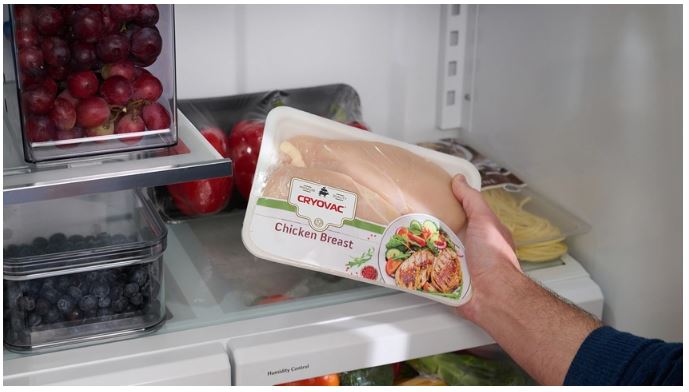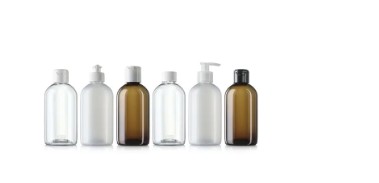SEE’s new compostable tray performs as well as standard protein trays on food processing equipment and in distribution.
t a Glance
- SEE’s new compostable meat tray offers an alternative to EPS and PET meat packaging
- The tray runs at high speeds on existing overwrapping equipment
- Tray is BPI-certified as industrially compostable, with DIN home-composting certification expected soon
SEE, formerly Sealed Air, has developed a bio-based, industrially compostable meat tray to replace expanded polystyrene (EPS) and polyethylene terephthalate (PET) trays on existing overwrappers with no changes to the equipment.
The food-contact-grade tray was introduced at the recent International Product and Processing Expo, held January 30 to February 1, 2024, in Atlanta.
The new Cryovac compostable overwrap tray is made from a resin that’s USDA-certified as having 54% bio-based content chemically derived from responsibly sourced wood cellulose.
In addition to cellulose, the tray material contains 45% recycled content from mixed waste. This waste, which includes a variety of difficult-to-recycle plastics, is broken down into molecules to form acetic acid, which is then combined with wood pulp to create resin pellets.
SEE developed the compostable tray as a more environmentally friendly alternative to EPS and PET case-ready meat trays. The bio-based resin contains no per-and polyfluoroalkyl substances (PFAS) or perfluorooctanoic acid (PFOA).
Compostable tray: in-plant pluses and products.
“SEE’s compostable tray has been proven to maintain the same operational efficiencies on food processing lines as traditional trays. The tray is engineered for high speeds, including denesting, machine handling, and boxing operations,” says Tiffani Burt, executive director of sustainability, graphics, and smart packaging, at SEE.
Packaging applications for the new tray include fresh poultry, beef, pork, lamb, veal, seafood, smoked and processed meats, and alternative proteins.
SEE reports that the lightweight biopolymer tray’s performance and stability are comparable to that of conventional trays. Extensive testing throughout the food value chain showed the compostable tray performs well, without leaking, cracking, or breaking, in demanding manufacturing and distribution environments and at extreme temperatures.
“A leading brand owner initially collaborated with SEE to test the compostable tray on existing food production lines and is now using the tray to package some products for retailers,” Burt says. “We continue to test the tray with leading processors.”
SEE
Tray’s compostable certifications.
BPI has certified the new tray — sans overwrap, pad, and label/sticker — as compostable, which means it can be broken down via biological treatment at large-scale, commercial composting facilities.
Home-compostable status is on the horizon, as well. “The home-composability certification process for SEE’s compostable tray is underway now. We expect to receive DIN [Deutsches Institut für Normun] certification” in summer 2024, Burt says.
Additionally, TÜV Austria has certified the tray’s resin as soil- and marine-biodegradable; microorganisms existing in nature can break down the material with no microplastic left behind.
SEE
Overwrap and retail considerations, options.
SEE currently offers the compostable tray in a 9-in. x 7-in. format (also known as 3P), “which is one of the largest-volume trays in the industry. Additional tray sizes will be available later this year,” Burt says.
The filled tray is finished with a heat-sealed overwrap film and is compatible with commonly used overwrap films, including Cryovac side-end-seal (SES) film, barrier display film (BDF), and polyvinyl chloride (PVC) film.
Shelf-life for proteins packed in the biopolymer tray is comparable to that of products packed in either EPS or amorphous PET (aPET) trays, SEE reports.
The bottom of the tray is embossed with language stating that it is industrially compostable. In addition, “retailers may choose to apply for the How2Compost label to be placed on the overwrap film or use other language stating the tray is compostable. Brands are also able to make labeling choices based on their needs,” Burt says.
“Ultimately, messaging on the overwrap film will depend on the sustainability needs/goals of the processor, brand owner, or retailer,” she adds.
Source
https://www.packagingdigest.com/sustainability/compostable-tray-nudges-eps-from-the-meat-case







